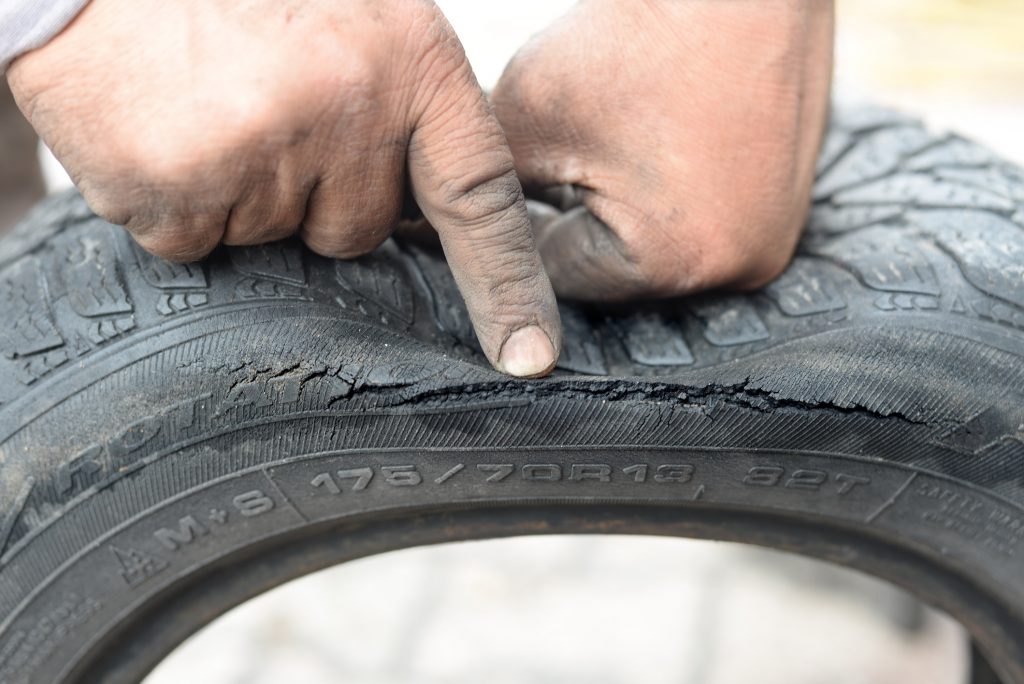The Hazards of Using Perished Tyres
- Tyre wear depends on factors like make, usage, driving style and terrain.
- Perished tyres can reduce grip, increase puncture risk and increase aquaplaning likelihood.
- A tyre’s condition directly influences road safety; regular monitoring and adherence to minimum legal tread depth of 1.6mm is crucial.
- Most tyres need replacement between 5-10 years; but autocentres will advise specifically.

It’s all too easy to forget about your tyres – but the truth is, the safety of yourself, your passengers, and other road users depends on their good condition.
In this article, we’ll be looking at what causes a tyre to wear, how old is too old for a tyre, and addressing the crucial question: are old tyres safe?
What causes a tyre to wear?
No matter how high quality a tyre is, it still has a limited lifespan. Multiple factors affect how quickly your tyres wear, including: make, type, vehicle, how often they’re used, your driving style, whether you keep up with maintenance, and the sort of terrain the car most commonly drives over.
Since every case is different, it’s up to you to keep an eye on their condition. Sure signs your tyres are beginning to wear too much include the appearance of cracks and bulges on the side walls. You must also check that your tyres have the minimum legal tyre depth of 1.6mm across three quarters of the tyre – simply insert a 20 pence piece into the tyre groove, and if you can see the outer band on the coin, the tread depth is too shallow.
Next time you have an MOT or vehicle service, ask your mechanic for their professional opinion on the matter. As this article confirms, we do not advise buying part-worn or pre-used tyres. By doing so, you are essentially buying aged tyres with lower performance and safety.
The dangers of perished tyres
- Reduced grip: The safety of your tyres hinges largely on how good the grip is. This feature is a literal lifesaver, especially in wet and icy conditions. It’s very dangerous to allow the tread of your tyres to wear so much that grip is reduced, which can reduce the traction of your vehicle – in worst case scenarios, this can lead to problems braking and loss of control on the road.
- Punctures and blow-outs: All tyres will lose air pressure over time, which is why it’s important to check your air pressure as part of regular maintenance. However, if this loss of tyre pressure is coupled with a weakening tyre tread or reduced rubber thickness, this can increase your risk of tyre punctures and bursts – which is a treacherous situation for both you and other road users.
- Aquaplaning: Tyre grooves and treads are designed to disperse water on the road, reducing the risk of aquaplaning. If the tyre treads have worn down too much due to age, this can increase the likelihood of aquaplaning – whereby water collects between the tyres and the surface of the road, thus affecting grip and ease of braking, accelerating and steering.
How old is too old?
As previously mentioned, the answer is dependent on multiple factors, but most tyres will need replacing after 5 – 10 years. Again, consult with your local auto centre for clarity on your individual case.
In summary, your vehicle’s safety, stability and grip on the roads relies almost entirely on the condition of your tyres. If you suspect your tyres are worn out, or if you simply need some expert advice concerning your vehicle, drop by your local Mr. Tyre branch for a professional opinion.
Established in 1971, Mr Tyre is a leading chain of auto-centres serving Central England. Whether you’re seeking tyre supply and fitting, or a professional MOT, we can help. Working with a range of vehicles, brands and products, we have the skills and experience to keep your vehicle operating at full health. Contact us today to see how we can help.


